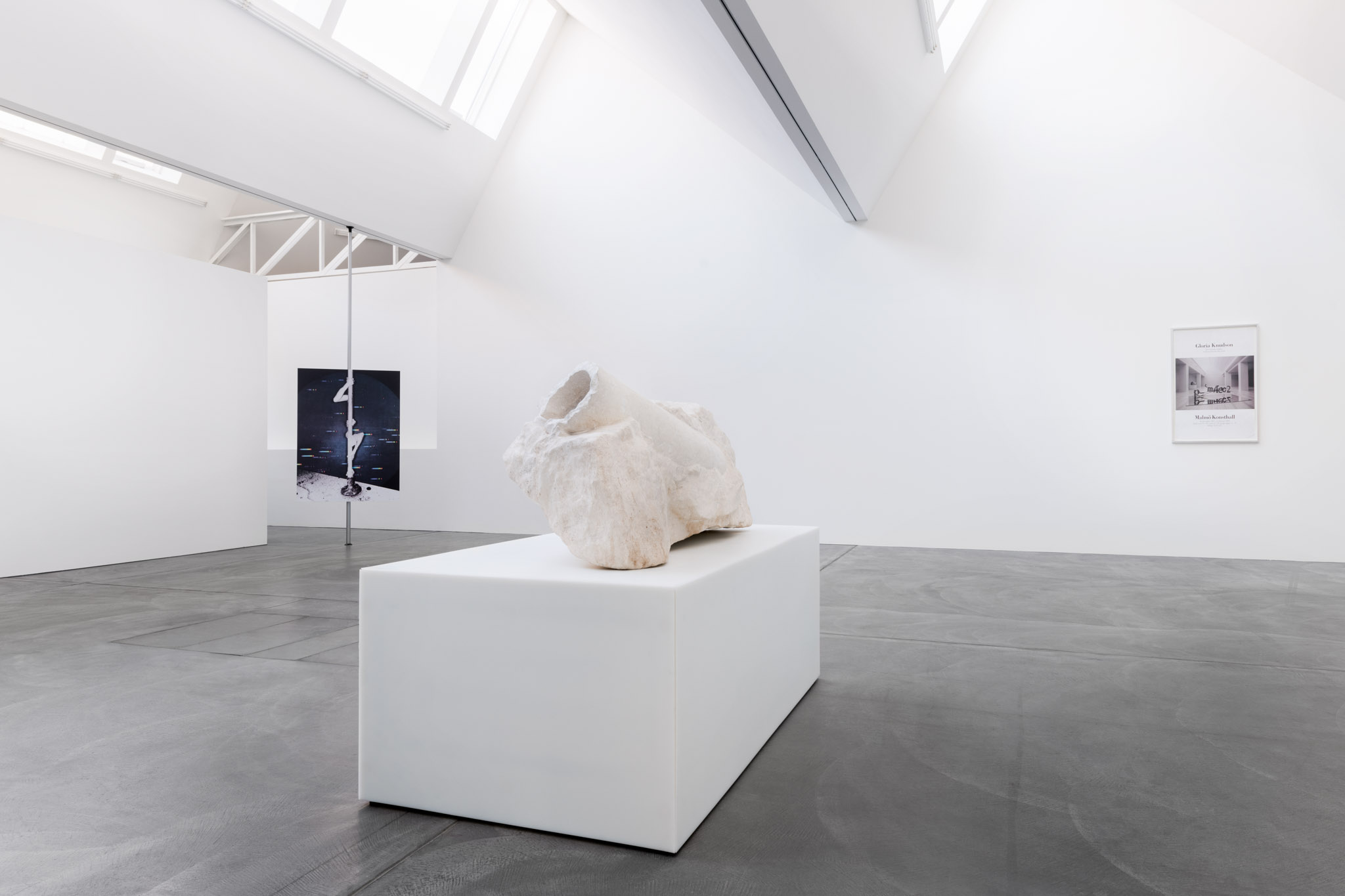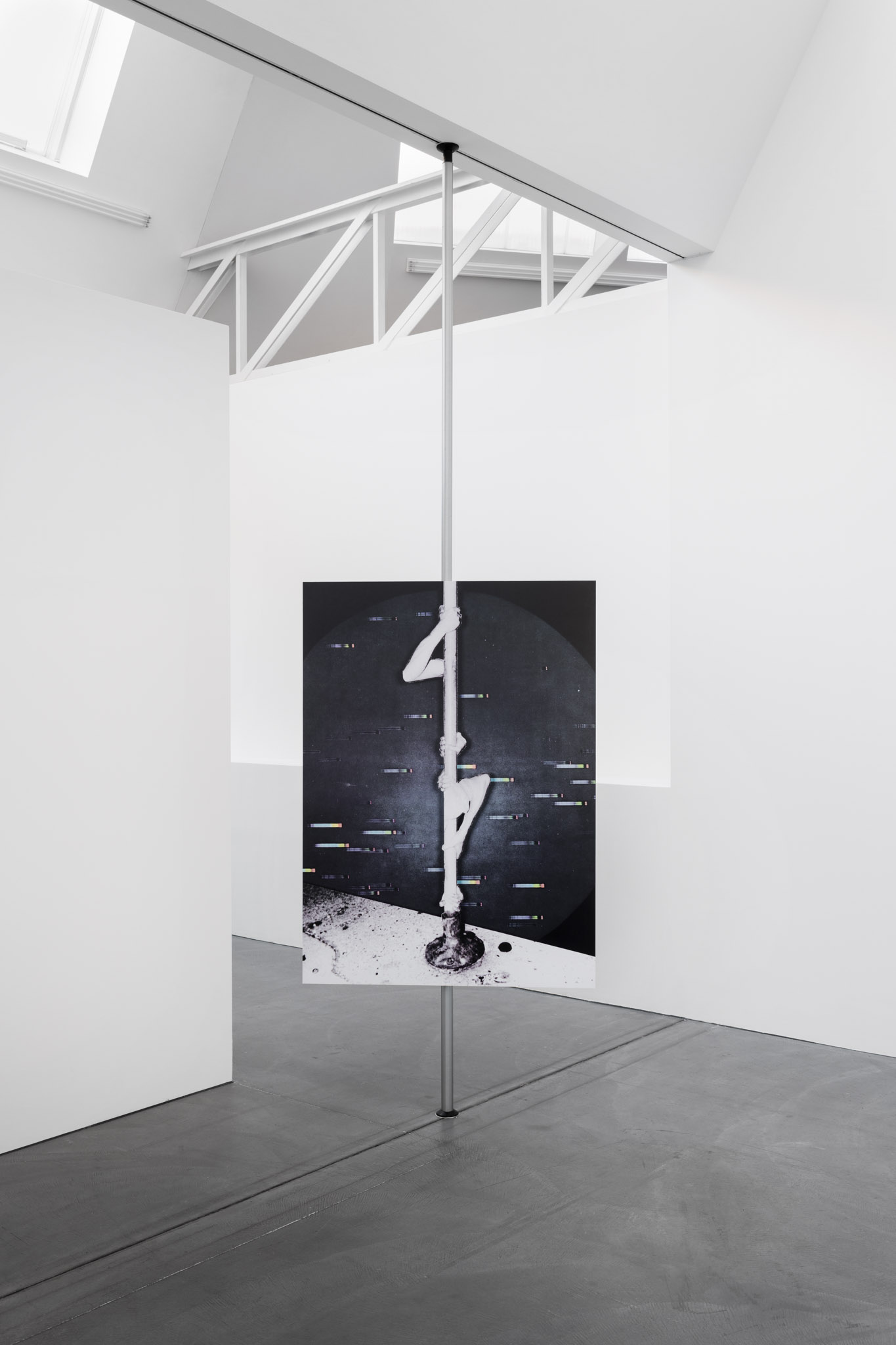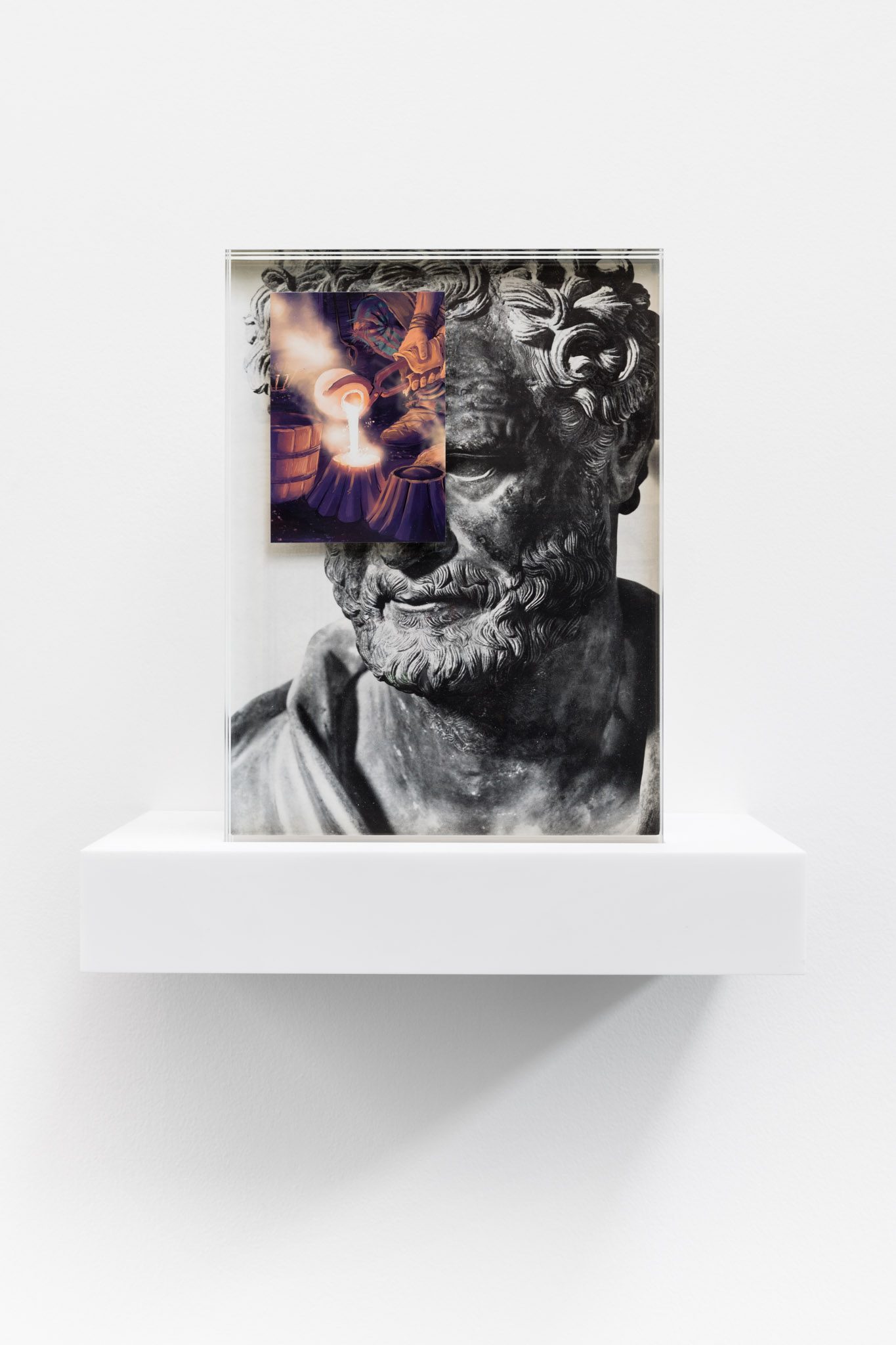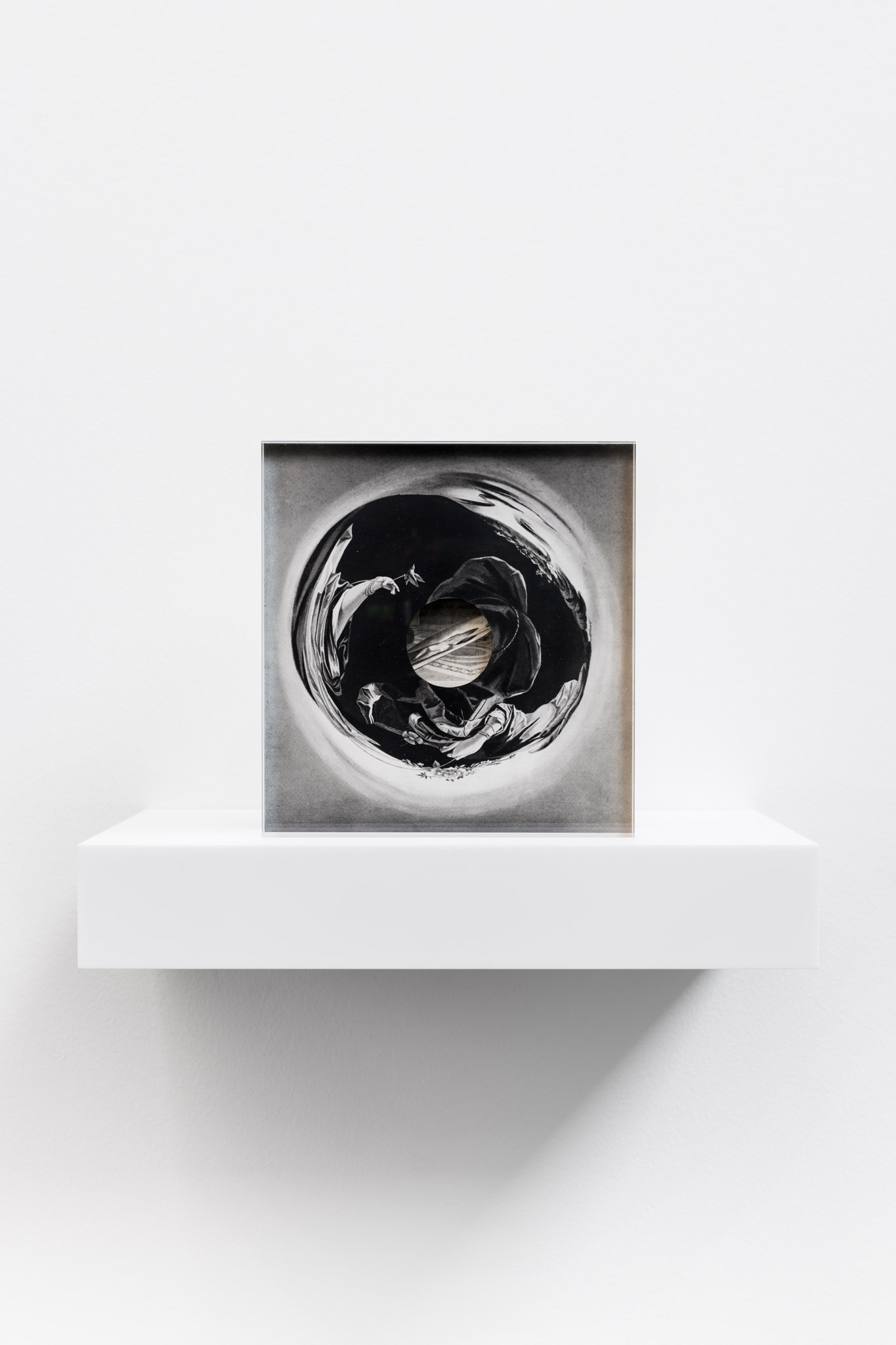Five (potential) facts about Christian Andersson’s Kitbash Tales

The (possible) meaning behind Kitbash Tales.
Vincent Pécoil is currently the director of the FRAC Normandie, where Christian Andersson has an exhibit opening on May 13, 2022. He has published many catalogue essays and contributed to various magazines such as Art Monthly, Les Cahiers du MNAM, Flash Art, Parkett and Tate etc.
1. Sphinx
Sphinx is the title of the first piece that welcomes the visitor; it suggests that the exhibition can be viewed as an enigma, and that this work may hold the key. Sphinxes are guardians, and when they are female, as the artist’s name on the poster suggests (Gloria Knudson), they are known to devour those unable to solve their riddles. (This fact is not historically proven.) On the offset printed poster, the sculpture in the foreground is composed of a series of distorted steel letters and numbers. This sequence of symbols is reminiscent of those that appear regularly on our screens, which we are asked to identify and then type ourselves to prove that we are not machines. Is this a question of verifying that we are true art lovers? From the moment we started to design mechanisms and logical systems to recreate intelligence, the question of its definition naturally arose. We started by defining intelligence in terms of computational ability, and once machines were able to calculate better than we could, we defined intelligence as the ability to play. Now that machines can play better than we can, the new criterion is the ability to have feelings and create art. As science fiction has an annoying tendency to become true, this new frontier for AI will undoubtedly be reached at some point.
Anyone can recognize letters and numbers. But only a ‘real’ art lover would know that Gloria Knudson does not exist (except in a novel), and that she has never had an exhibition at the Malmö Konsthall. In art, forgery (the counterfeiting of another work) is a shameful taboo. Those who forge works are swindlers, those who buy them are idiots. But the fake is also part of a modern art tradition. The ability to perceive the fake is what distinguishes the amateur from the novice. However, the ability to perceive the real fake, that is, the ‘artistic’ fake, is what distinguishes the connoisseur from the amateur.
In the background of the image reproduced on the same poster, another sculpture can be seen in the exhibition, which appears to be Omega Stretch, a sculpture made by Christian Andersson in 2022 (later than the date on the poster) and presented for the first time in Kitbash Tales.

Sphinx, 2022, Offset-printed poster, 105 x 75.5 cm (Framed), Edition 1/6 + 2 AP Photos: Andreas Zimmermann.

3. Omega Stretch
Seemingly more tangible than the previous work, Omega Stretch is an imposing stone sculpture. The Greek letter Omega can be seen at one end, but it seems extruded, lengthened, like a large worm. The omega is set in the stone like one of those unfinished, non finito sculptures, where half or three-quarters of a carved human body seems to be imprisoned in the block from which it is trying to escape. But this block also resembles a fossil—which it is, in a sense: stone as a material is really fossil sediment that is millions of years old. Galileo thought that nature was written in mathematical language. Geologists read the superimposed layers of rock like palimpsests. If this sculpture were not a sculpture, it might prove that language and writing preceded us and, in this instance, since it is one, that they might outlive us, fossilized, in the future.
If Omega Stretch travels through time in anticipation, presenting itself as a relic that could be found in the future, Marrow has gone in the opposite direction.
Error. No content found for Slider
3. Marrow
The sculpture is a plaster copy of a Renaissance work, assembled from different moulds, with a plastic object added to the hand of the écorché. It is certainly the most ‘kitbash’ piece in the exhibition—a fact that partly explains the title: the exhibition is not only an assemblage of parts, but also, allegorically, of different periods and contexts.
The figure is holding a tesseract or hypercube, a mathematical object that, in simple terms, can be described as the geometric analogue of the square of a number—a squared cube, as it were—itself illuminated by a beam of light emanating from the skull and projecting a shadow of a ‘simple’ cube on the wall. The projection goes from the mind to the image, contrary to the Platonic cave, suggesting that we do not truly perceive the dimension in which we are living.
Error. No content found for Slider
4. Atomizer
In Atomizer, hands clutch a bar, like cosmic travellers on public transport, or dancers in a nightclub. In the background is a spectroscopic map of the sky. In fact, astronomy has something in common with archaeology: the study of the past, since starlight or the ‘fossil radiation’ of the universe takes millions, even billions of years to reach us. The piece suggests the infinitesimal scale of our place in the universe; it is a kind of contemporary vanitas, like the other two collages, entitled Cache (…).

Atomizer, 2022, Photo mounted on aluminium, autopole, 150 x 63 cm, Edition 1/3 + 1 AP.
Photo: Andreas Zimmermann.
5. Caches
Superimpositions of images, the title of these pieces induces an analogy between the functioning of our collective memory and that of computers. The juxtaposition of anamorphisms in one, and the simultaneous representation of two potential states (solid and liquid) of an object in the other, suggests that there is an equation between a change of viewpoint and a change of state—an analogy that can ultimately be found throughout the exhibition. We speak of ‘solid’ facts to refer to those that seem the most certain. In Kitbash Tales, this image is turned upside down. The analogies work both ways; the fossilized objects are our external memory, and all these facts discussed could just as well be described as events, in line with the concept of the philosopher A.N. Whitehead who considered everything—from a stone to the Great Pyramid of Giza, for example—as events.

Cache nr 16, 17, 18, 2022, Paper, plexiglass, green cast acrylic plastic, mdf, 42 x 41 x 27 cm.
Photo: Andreas Zimmermann.

Cache nr 19, 20, 21 , 2022, Paper, plexiglass, green cast acrylic plastic, mdf, 31 x 42 x 27 cm.
Photo: Andreas Zimmermann.




